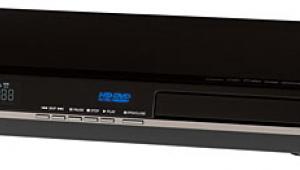Review: PS Audio PerfectWave System

Peanut butter and chocolate. Wine and cheese. Lennon and McCartney. Some things are great on their own, but when they meet their perfect counterpart, the result can be pure magic. In this case, the pairing of disc transpor tand digital-to-analog converter in PS Audio’s PerfectWave was no serendipitous“You got your peanut butter in my chocolate!” moment; it was the fruit of 2 years of engineering effort and thousands of hours of programming. According to PS Audio,“PerfectWave is a system, designed to be used together for best benefit.”
Most people don’t ponder the mechanics of how music gets from a disc (or disk) to their speakers. But all of the 0s and 1s that make up digital audio need to be converted into analog before that can happen. And this process is a very important and complicated step that can greatly affect audio quality.
To experience the PerfectWave system, PS Audio sent me a trio of components: the CD- and DVD-reading PerfectWave Transport (PWT), the PerfectWave DAC (PWD), and its PerfectWave Bridge (PWB) for network streaming. Together, these provided everything I needed to produce some of the fi nest-sounding music yet to grace my home.
Setup
The system arrived lovingly packaged, with components “floating” in a plastic-wrapped cocoon. Everything about the units suggested quality from the moment I unboxed them. At 25 pounds, these are clearly not your typical audio-source components. Each chassis is a combination of aluminum and steel, with pleasingly rounded edges and highly polished piano-gloss black covers. A pair of white cotton gloves is included, allowing you to give yourself a true white-glove delivery.
PS Audio has elected to follow the growing trend of forgoing an owner’s manual, referring users instead to the company’s Web site to download a digital version. While I appreciate the green effort here, I think a nicely bound manual for instant reference isn’t unreasonable when you spend a couple grand for an audio component.
The PWT ($3,000) offers multiple output options, including balanced AES/EBU, coaxial and optical digital, and HDMI. It also features a LAN jack for retrieving album art and metadata over a network, an RS-232 port, an IR input, and a slot for the included 2-GB SD memory card.
In PS Audio’s PerfectWave system, an HDMI link is used for the I2S interface. According to PS Audio’s online Wiki, I2S “is commonly used to carry PCM information between the CD transport and the DAC in a CD Player. The I2S bus separates clock and data signals, resulting in a very low-jitter connection.” The PWD (also $3,000) inputs include two I2S, balanced AES/EBU, coaxial and optical digital, and USB. It has both balanced XLR and RCA analog outputs. Because the DAC offers volume adjustment, the PWT can bypass a preamp and be connected directly to an amplifier. When the Bridge ($800, or $700 when purchased with the PWD), a card that slides into a slot labeled “Expansion Port” on the back of the DAC, is connected, the PWD gains LAN and USB ports.
For my setup, I connected the PWT to the PWD via HDMI, and the PWD to my preamplifier via RCA cables. I also connected my 15-year-old Yamaha CD changer to the PWD via its optical digital input.
- Log in or register to post comments






























































